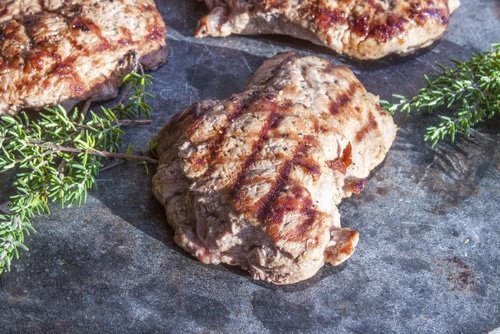Welcome, dear readers, to the irresistible world of cooking with moose! In this article, we shall embark on a culinary adventure exploring the rich flavors and sumptuous dishes that can be created using this magnificent creature’s meat. But before diving into the delectable moose meat recipes, let us take a moment to appreciate the history behind moose meat consumption and discover its health benefits.
Brief History of Moose Meat Consumption
Moose meat has long been a staple in many cultures across the globe. Indigenous communities in North America have cherished this majestic animal as an abundant source of sustenance for centuries.
The indigenous peoples of Scandinavia also revere the mighty moose, incorporating its meat into traditional dishes passed down through generations. Early settlers in North America relied heavily on moose meat for survival as they explored and settled in new territories.
The versatility of moose meat made it an indispensable resource during harsh winters when other food sources were scarce. Moose hunting became an essential skill, providing nourishment and valuable materials such as hide and bones.
Health Benefits of Moose Meat
Beyond its historical significance, moose meat boasts various health benefits, making it a compelling choice for modern-day gastronomes seeking flavor and nutrition. With its lean nature and low-fat content, moose meat is an excellent source of high-quality protein without excessive calories. In addition to protein, this delectable game offers essential nutrients like iron, zinc, vitamin B12, niacin, and selenium – all vital for maintaining optimal health.
These nutrients contribute to proper red blood cell formation, boost immune function, and support nerve function and metabolism. Furthermore, moose meat is generally free from antibiotics and hormones commonly found in mass-produced meats, ensuring a more natural and wholesome dining experience.
Its lean nature also makes it an excellent choice for those following low-fat or low-cholesterol diets. So, we find ourselves at the crossroads of history and health, dear readers.
With a rich heritage deeply entrenched in cultures around the world and health benefits that entice the discerning palate, moose meat beckons us to explore its many possibilities in our culinary endeavors. Join us as we embark on creating exquisite moose meat dishes that will tantalize your taste buds!
Preparing Moose Meat
Butchering and Processing Techniques
Proper butchering and processing techniques are essential to ensure you make the most of this magnificent game meat when cooking with moose. Butchering a moose requires skill and precision. After harvesting the animal, it is important to field dress it promptly to preserve the quality of the meat.
This involves removing the internal organs carefully, ensuring they do not puncture any vital organs. Once field-dressed, the next step is quartering and deboning the moose.
This can be an intensive process due to the large size of these majestic animals, but with patience and some basic knowledge of anatomy, you can master this task. Additionally, removing all silver skin and connective tissue from the meat during processing is crucial as it can affect its tenderness when cooked.
Tips for Handling and Storing Moose Meat
After properly butchering moose meat, handling and storing it correctly are essential for maintaining its quality until you’re ready to cook those mouthwatering moose meat dishes. First, clean all surfaces that come into contact with raw moose meat using hot, soapy water or a sanitizing solution to prevent cross-contamination.
When storing moose meat in your refrigerator or freezer, remember these tips: 1) Wrap individual cuts tightly in plastic wrap or place them in airtight freezer bags; 2) Label each package with the date and cut type for easy identification later on; 3) Keep moose meat in your refrigerator for no more than 2-3 days before cooking or transferring it to your freezer; 4) In your freezer, store moose meat at temperatures below 0°F (-18°C) ensuring there are no temperature fluctuations; 5) For extended storage periods (beyond six months), it is recommended to vacuum-seal the meat for optimal preservation. Following these tips ensures that your moose meat remains fresh and safe, resulting in delicious and satisfying meals.
Grilling: Achieving the Perfect Smoky Flavor
When cooking with moose meat, grilling is a fantastic method that brings out its rich flavors while imparting a delightful smoky essence. However, due to its lean nature, moose meat can sometimes be tough if not properly prepared. To ensure a tender result, marinating techniques are crucial.
Opt for acidic marinades, such as citrus-based ones or those containing vinegar, as they help break down the meat’s fibers and enhance its tenderness. Before grilling, remove your marinated moose meat from the fridge and let it come to room temperature for about half an hour.
This allows for even cooking and prevents the edges from getting overdone while the center remains undercooked. As for grilling times and temperatures, it’s recommended to preheat your grill to medium-high heat (around 400°F/200°C) and cook your moose meat for approximately 6-8 minutes per side for medium-rare results.
Roasting: Creating Succulent and Juicy Dishes
Roasting a whole moose leg is an exceptional culinary adventure that guarantees succulent and juicy results. Before diving into this grand endeavor, consider the seasoning options available to enhance the natural flavors of moose meat.
A classic combination consists of garlic cloves, rosemary sprigs, and freshly ground black pepper generously rubbed onto the surface of the leg. To roast a whole moose leg, preheat your oven to 375°F/190°C.
Place the seasoned leg in a deep roasting pan with a rack that allows air circulation around it. Cover loosely with aluminum foil before inserting it into the oven.
Cooking times will vary depending on the weight of the leg; however, as a general guideline, allow approximately 20 minutes per pound. Baste the leg periodically with its rendered juices to ensure optimal moisture and tenderness throughout the roasting process.

Slow Cooking: Unleashing the Tenderness of Moose Meat
Slow cooking is the way to go if you’re seeking unparalleled tenderness in your moose meat dishes. This method breaks down the connective tissues in tougher cuts of meat, resulting in melt-in-your-mouth goodness. Slow cookers or Dutch ovens are excellent tools for achieving this delectable outcome.
To create mouthwatering slow-cooked moose stews and soups, start by searing your moose meat over high heat to seal its juices and enhance flavor. Once seared, transfer the meat to your slow cooker or preheated Dutch oven with an assortment of aromatic vegetables, herbs, spices, and a liquid of your choice, such as broth or wine.
Cook on low heat for several hours until the meat becomes tender enough to be effortlessly pulled apart with a fork. The low and slow cooking process allows all those flavors to meld together harmoniously while transforming even tougher cuts into tender delights ready to be savored.
Unique Moose Meat Recipes from Around the World
Scandinavian Delicacies: Traditional Swedish Moose Meatballs
When it comes to Scandinavian cuisine, Swedish meatballs are a quintessential favorite. However, why not make these delectable treats with moose meat for an extra special twist? The authentic ingredients used in Swedish cuisine perfectly complement the rich flavor of moose.
Mix ground moose meat with breadcrumbs, onions, and traditional spices like allspice and nutmeg. Once the mixture is well combined, roll it into small balls and fry them until golden brown.
To elevate these moose meatballs, serve them with lingonberry or creamy dill sauce. The tangy sweetness of lingonberry sauce adds flavor to every bite, while the creamy dill sauce provides a refreshing herbiness that pairs perfectly with the rich taste of moose.
Canadian Specialties: Poutine with Shredded Moose Meat
Ah, Canadian cuisine – known for its hearty and indulgent dishes. And what better way to celebrate Canadian flavors than by incorporating shredded moose meat into one of their iconic dishes – poutine!
This classic comfort food consists of crispy fries smothered in gravy and topped with cheese curds. By adding tender shredded moose meat to this incredible combination, you take poutine to a new level of deliciousness.
Depending on your preferences, there are various ways to customize your moose poutine. Some prefer adding sautéed mushrooms or caramelized onions for extra depth of flavor, while others enjoy a sprinkle of fresh herbs like thyme or parsley.
Creating homemade gravy using rich beef stock will add another layer of intense taste that perfectly complements the robust flavors of cooking with moose. Remember, friends—cooking is an art form; let your creativity reign, and experiment with flavors that excite your taste buds.
Lesser-Known Uses of Moose Meat in Culinary Creations
Charcuterie Delights: Making Your Own Smoked Moose Jerky
When exploring moose meat’s versatility, creating homemade smoked jerky is an exceptional option. For optimal results, begin by selecting lean cuts such as sirloin or top rounds.
After trimming any excess fat, slice the meat into thin strips, ensuring it is even in thickness and length. For marinating, consider a blend of soy sauce, Worcestershire sauce, honey, garlic powder, and black pepper.
Allow the meat to marinate overnight in the refrigerator to infuse those delicious flavors. When ready to smoke the jerky, set your smoker to around 180°F (82°C), and let it slowly cook for several hours until it reaches your desired tenderness and smoky perfection.
Conclusion
Moose meat is a captivating ingredient that opens up culinary possibilities. From grilling and roasting techniques to creating traditional delicacies like Swedish moose meatballs or Canadian poutine with shredded moose meat, there is no shortage of creative dishes to explore. Furthermore, venturing into lesser-known uses, such as making smoked moose jerky, adds another dimension to your cooking repertoire.
So why not step outside your comfort zone and embark on a gastronomic adventure with moose meat? Experimenting with unique flavors can be an incredibly rewarding experience that will leave you excited about every meal you prepare with this noble game meat.





